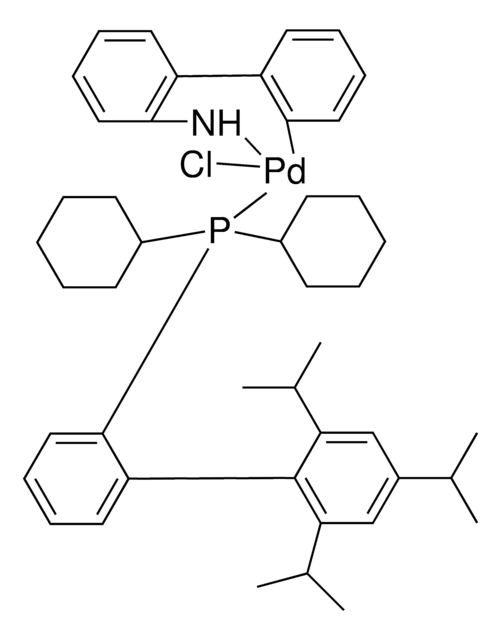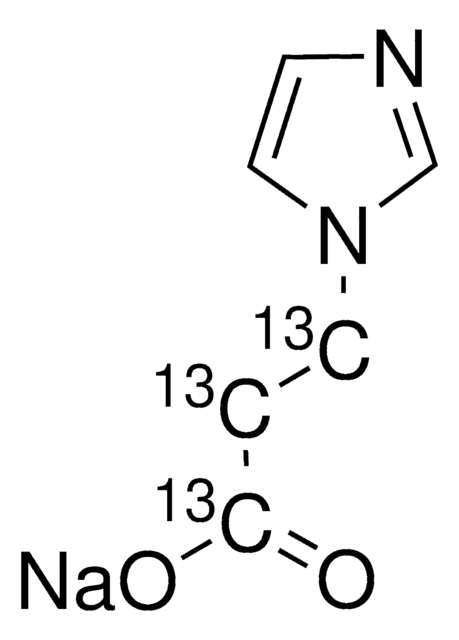ALD00378
Wasa-Yu MPAA Ligand
Synonym(e):
(S)-3-(2,6-Difluorophenyl)-2-((((4-(trichloromethyl)heptan-4- yl)oxy)carbonyl)amino)propanoic acid
About This Item
Empfohlene Produkte
Form
solid
Eignung der Reaktion
reaction type: C-H Activation
reagent type: catalyst
reagent type: ligand
reaction type: Peptide Synthesis
bp
521.1 °C±50.0 °C
Dichte
1.365 g/cm3±0.06 g/cm3
Funktionelle Gruppe
amine
carboxylic acid
Lagertemp.
2-8°C
SMILES String
O=C(O)[C@@H](NC(OC(CCC)(CCC)C(Cl)(Cl)Cl)=O)CC1=C(F)C=CC=C1F
InChI
1S/C18H22Cl3F2NO4/c1-3-8-17(9-4-2,18(19,20)21)28-16(27)24-14(15(25)26)10-11-12(22)6-5-7-13(11)23/h5-7,14H,3-4,8-10H2,1-2H3,(H,24,27)(H,25,26)/t14-/m0/s1
InChIKey
MYNBDMWXOQDYED-AWEZNQCLSA-N
Anwendung
Sonstige Hinweise
Ähnliches Produkt
Lagerklassenschlüssel
11 - Combustible Solids
WGK
WGK 3
Flammpunkt (°F)
Not applicable
Flammpunkt (°C)
Not applicable
Analysenzertifikate (COA)
Suchen Sie nach Analysenzertifikate (COA), indem Sie die Lot-/Chargennummer des Produkts eingeben. Lot- und Chargennummern sind auf dem Produktetikett hinter den Wörtern ‘Lot’ oder ‘Batch’ (Lot oder Charge) zu finden.
Besitzen Sie dieses Produkt bereits?
In der Dokumentenbibliothek finden Sie die Dokumentation zu den Produkten, die Sie kürzlich erworben haben.
Verwandter Inhalt
The Yu program centers around the discovery of catalytic carbon–carbon and carbon–heteroatom bond forming reactions based on C–H activation. Target transformations are selected to enable 1) the use of simple and abundant starting materials such as aliphatic acids, amines and alcohols, and 2) disconnections that drastically shorten the synthesis of a drug molecule or a major class of biologically active compounds.
Unser Team von Wissenschaftlern verfügt über Erfahrung in allen Forschungsbereichen einschließlich Life Science, Materialwissenschaften, chemischer Synthese, Chromatographie, Analytik und vielen mehr..
Setzen Sie sich mit dem technischen Dienst in Verbindung.








